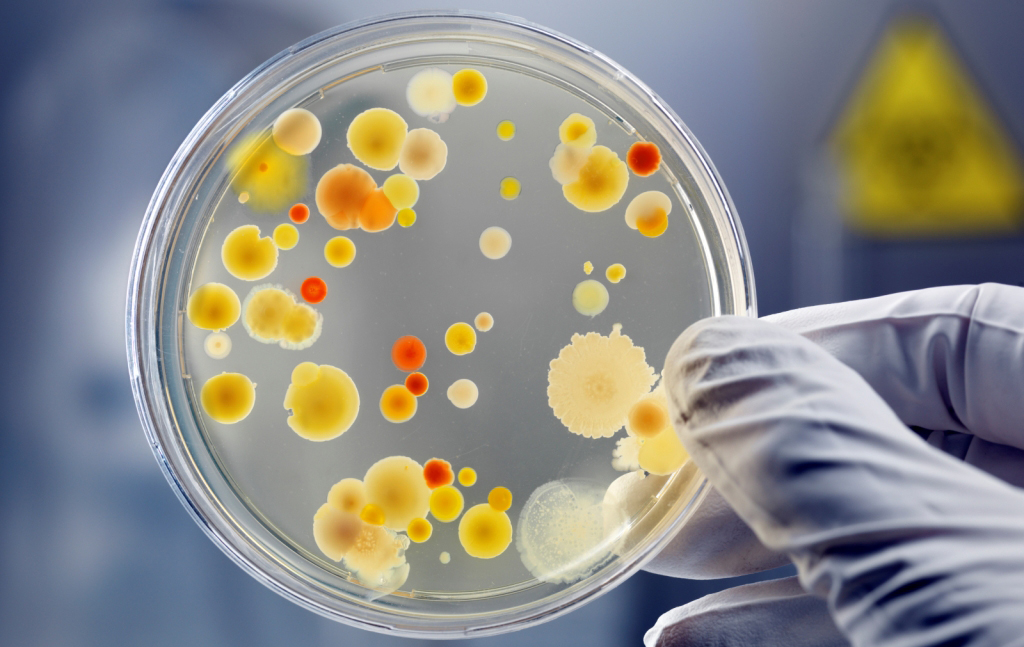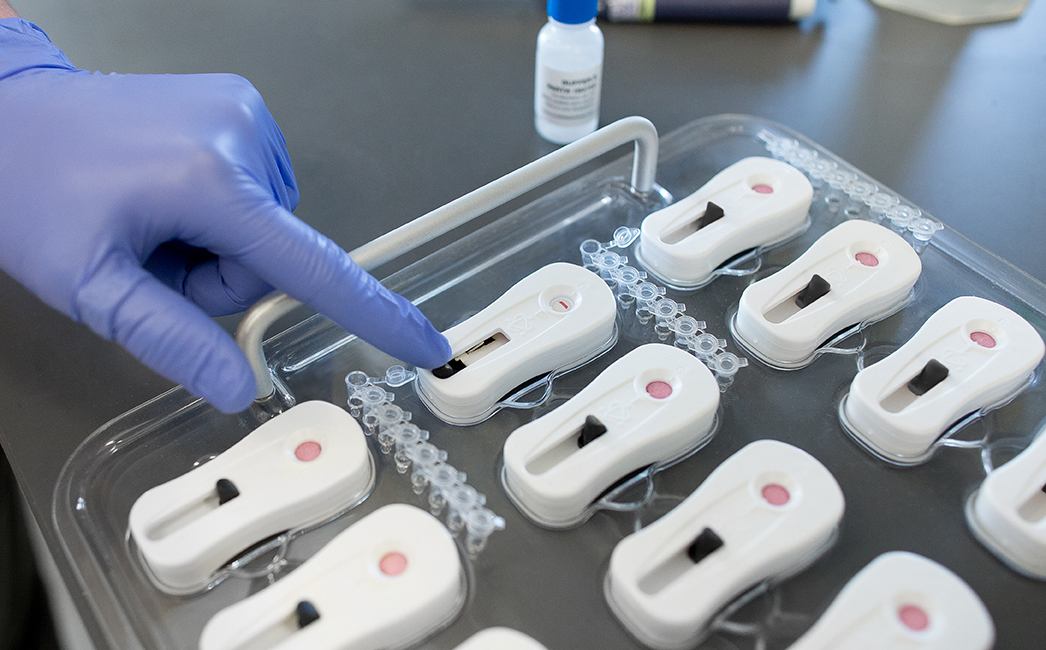It’s a feeling I hope you never experience: You crack open an ice cold beer after a long day, take a sip expecting the familiar hoppy, bubbly goodness to hit your taste buds and instead, you get a mouthful of flat, acrid sludge.
You’ve just tasted rotten beer. And no one’s higher on your shit list than the brewers who bottled it.
It’s the weekend, you’ve made it through the long week, and it’s time for Happy Hour, Gizmodo’s weekly booze etc. column. A cocktail shaker full of innovation, science, and substances.
Discovering you’ve bought an (unintentionally) soured six pack may put you out for a night. But for a small craft brewer, a batch of spoiled product isn’t just a nuisance — it’s a reputation-ruining nightmare. That’s why beer-makers around the world are turning to brewPAL, a clever new gadget from the Philly-based biotech company Invisible Sentinel.
brewPAL allows brewers to detect signs of spoilage faster and more reliably than before with a new method: scanning a beer’s DNA.
Yes. Your beer has DNA, too. Or rather, the microbes that love to live in it do.

It’s no accident that this little device looks an awful lot like a pregnancy test — its results are about as easy to interpret. One line, your beer’s in the clear. Two, and it’s got an infection, one that may destroy the product by the time it hits the shelves.
But don’t let brewPAL’s clean and simple façade fool you: Powered by Invisible Sentinel’s Veriflow technology, brewPAL packs a serious dose of molecular biology. Getting a tour of its inner workings was enough to make me appreciate why spoiled beer has been such persistent problems for generations.
(Full disclosure: As compensation for my trip to Invisible Sentinel, I was gifted a bottle of Pliny the Elder, Russian River Brewing Company’s signature double IPA. And it was delicious, bitches.)
Bugs in Beer
First things first, what makes beer go bad? Spoilage is typically caused by bacteria that produce excess lactic acid, the same critters used to sour beer intentionally. Unfortunately, two of these bacteria — Lactobacillus and Pediococcus — carry hops-resistance genes, allowing them to thrive in, and destroy, many types of beer besides the ones they’re intended for.

Traditionally, breweries have relied on old-school culture-based techniques to hunt for rouge Lactos and Pedis. You seed a petri dish with a sample of beer, seal and incubate it and see if anything grows. After four-five days, you can usually count the number of microbial colonies on your plate and get a rough idea of how many bugs are in your beer.
But this method has always had major limitations. First off, five days isn’t really a timeframe that fits within the tight production schedule of most breweries. Tack onto that an extra couple days to actually count the plates, and you’re looking at upwards of a week before you can be sure your beer’s clean.
“Nobody can wait a week to package your beer, you’d have to have way too many tanks for it to be cost effective,” Adam Bartles, director of operations at the Philly’s Victory Brewing Company, told me. “Most of the time the beer starts shipping before you have the results.”
What’s more, when brewers culture bacteria from beer, they’re not just growing Lactos and Pedis — they’re growing everything. A dedicated brewer can learn to identify the germ bugs based on the size and shape of their colonies, but speaking now as a former microbiologist, this work is slow, tedious, and extremely error-prone. (It never, ever looks quite like the textbook says it will.)
As a result, most breweries treat these culture tests as more of a routine screen, while labouring to keep their tanks as clean as possible, crossing their fingers, and saying a little prayer. Most of the time, this strategy works, but when it doesn’t, it totally sucks.
“If you ship out a bunch of beer with Lacto, you’re faced with either recalling and destroying that beer or seeing what happens,” Bartles said. “That’s not a comfortable business position to be in.”
So, What’s brewPAL?
brewPAL is everything old-school, culture-based microbiology is not. It’s fast, reliable, and specific as hell. It can give brewers a result within 3-4 hours, allowing them to test every batch of beer and ensure it’s clean before shipping it off to stores. How, you might ask, does this magical little device work?

In principle, quite simply. Remember those hops-resistance genes? Turns out, two of them are excellent markers for spoilage strains. To detect these intruders, a brewer first takes a sample of beer and spins it down in a centrifuge to collect any bacteria and sediment at the bottom. This sediment then gets re-suspended in a tiny plastic tube, which Invisible Sentinel has pre-filled with chemical reagents and enzymes intended to rip all those little beer bugs open and pull out their DNA.
That tube, then, goes straight into a PCR machine. PCR, or polymerase chain reaction, is a technique that allows researchers to make many, many copies of a gene they’re interested in studying. In grossly simplified terms, PCR cooks DNA to unwind it, then uses a heat-loving enzyme to copy the gene you’re targeting many times over.
For customers who’d rather be making beer than doing molecular biology, Invisible Sentinel has cut all the complexity out of PCR — there’s no mixing chemical reagents by hand or fine-tuning the reactions. You can set everything up, take a three hour nap (or happy hour!) and your sample will be ready to test. You then remove your test tube from the machine, squirt a few drops of PCR’d beer onto a brewPAL cassette, and wait three minutes. A DNA-sensitive biological reaction will cause a second line to appear on the cartridge if you’re hops-resistance positive.
So far, brewPAL has never had a confirmed false result, positive or negative and — what’s even more astonishing to those familiar with PCR — it’s quantitative. That is, brewPAL not only says that you’ve got Lactos or Pedis in your beer, the strength of the signal indicates how many bugs are present. For brewers, this is a critical decision-making tool, because certain beers can withstand a larger number of spoilage bugs than others without a detectable flavour change.

Since its commercial launch earlier this year, brewPAL has been adopted by 20 breweries in the US and Canada, three in Australia and New Zealand and one in the EU. The technology costs $US25 per test, plus the initial investment in laboratory equipment, which Invisible Sentinel figures at roughly $US12 thousand dollars. This cost, Invisible Sentinel tells me, represents a 10-20 per cent annual increase over traditional plating.
But word on the street is, getting fast, reliable data is well worth the investment. Victory, for one, not only uses brewPAL to test every batch of beer that exits its premises, it routinely deploys the device to monitor its water, floors, pipes and any other areas of possible contamination around the brewery.
“You don’t need a trained microbiologist or a scientist in the lab,” Bartles told me. “If you’re a 1 man brewery, you can do this. As long as you know how to take a sterile sample, you can have as solid results as the best brewers.”
So, next time you pour yourself a pint only to discover something much more sour than you bargained for, don’t write off those brewers forever. Instead, make them aware of your grievance, and ask them if they have heard of brewPAL. You’ll probably get a refund, and, more importantly, you’ll be helping to eliminate bad booze from the world.
If that doesn’t win you some weekend karma, I don’t know what will.
Top image: Quinn Dombrowski / Flickr
